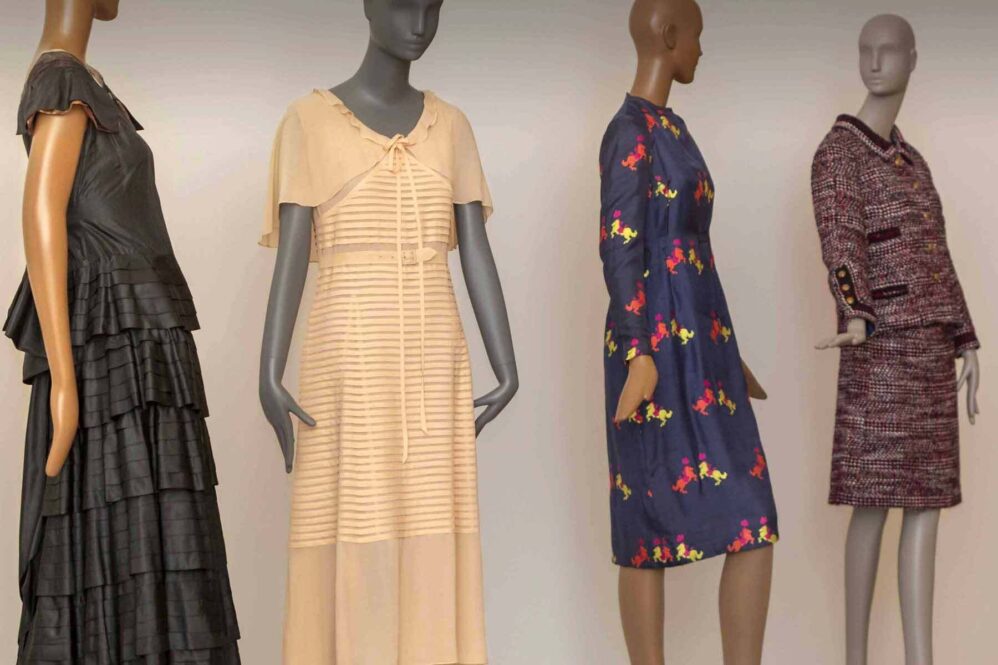“Stepping into the Court room, the other day, we were sorry to see, what we are happy to say is an unusual sight in our Court of justice,–the arraignment of females at the bar…”
So begins the account of the trial of Louisa Matilda M. Swan and Mary Holden, convicted in 1830 of stealing and selling tortoiseshell from the home of Captain Joseph Ropes, where Mary worked as a servant.
Though the account of the sentencing is merely a blurb in the “Supreme Court” column of the Salem Observer, the circumstances were scandalous enough to warrant an accompanying article, “FASHION AND CRIME,” which briefly touched on the girls’ case before launching into an attack on women’s interest in fashion. The author chastised women for their constant sartorial novelty seeking, censuring the “eager avidity with which they adopt every newly imported English and French fashion, without regard to cost, comfort, propriety or even delicacy.” Ah, those greedy, indelicate broads and their dresses!

Though the crimes of Mary and Louisa are now merely footnotes in Salem’s history, the reaction of the press is one iteration of a long lineage of the dismissal of women’s relationship to clothing and fashion. An interest in keeping up with fashion is portrayed as greedily immoral, and for anyone who’s ever read about how Steve Jobs was successful by merit of his wardrobe frugality, you’ll know that these attitudes haven’t yet fully dissipated!
Unfortunately, library collecting has traditionally gone hand in hand with the values of the dominant (usually masculinist) culture — as the adage goes, history is “written by the victors,” but it’s also more broadly written by those in power.

The materials that are deemed worthy of collecting are those in line with the interests of those who have the means to purchase and preserve them, making it much harder for the contemporary scholar to find primary sources from women, working class individuals or non-white communities. So the question becomes, as an institution, how can we recenter marginalized histories and challenge the assumptions of the “history writers” of the past?
As my fellow Phillips librarians know all too well, I am an unabashedly avid ephemerist. Below, you can watch my recent talk called Salem For Sale: Advertising Essex County, 1770-1990.
Advertisement for ‘The Tricora Relief’ corset, manufactured by the Bridgeport Corset Co. and sold by Mrs. M.A. McNeil, owner of a clothing shop in Salem. The corset was purported to be “delightfully comfortable” due to innovations in the stays. Phillips Library, Essex County Advertising Collection.
Ephemera can be thought of as the flotsam and jetsam of disposable paper goods that accumulate in a society–things like ticket stubs, flyers or catalogs. In the hierarchy of the world of print materials, ephemera have tended to fall to the bottom, languishing and forgotten, but in our quest to re-highlight stories of marginalized communities, unsurprisingly the marginalized print materials are often some of the richest sources.
Using a combination of digital mapping technologies and item-level archival processing of the Essex County Advertising Ephemera Collection, I have been working on a project over the past year that highlights women’s historical contributions to Salem’s business community, most of which relate directly to fashion. As women’s professions were very much prescribed by societal norms, dress goods, millinery and women’s hairstyling were some of the few spaces for female entrepreneurship in the 19th century.
Though there are account books, manuscripts, letters and books from many of Salem’s businessmen, none of the women who feature on the advertising ephemera are represented elsewhere in our collections — without ephemera, their contributions to the Salem business community would be relegated to a single line in contemporary directories. Fully processing the Advertising Ephemera Collection allows scholars to discover these women more easily, but I still felt there was a need for a view in aggregate.
So, over the past six months of COVID-19-related shutdowns, I have been working on a project to map any advertising ephemera from Salem printed with an address, with a special focus on highlighting female-owned businesses. By creating a searchable map, we can view these materials comprehensively, allowing us to trace the landscape of Salem’s business communities both temporally and spatially. The project is ongoing, working toward a comprehensive map of Salem advertising ephemera, complete with images and bibliographic information and filterable by date, business type and, of course, women-owned businesses.

Though many of women’s early contributions to fashion have undoubtedly been lost, we can use cataloging and curation to reclaim space for women’s history. If you’re interested in learning more, these same themes will be highlighted in Made It: The Women Who Revolutionized Fashion, our upcoming exhibition featuring “women's often-overlooked contributions to the fashion and design industry.”
Join our virtual library presentation and Q&A on Thursday, October 22, 2020 with Caylin Carbonell — the Phillips Library's 2020 Frances E. Malamy Research Fellow. Learn about her dissertation Fraught Labor, Fragile Authority: Households in Motion in Early New England and what she uncovered at the library. The program is free.
Keep exploring
PEMcast
PEMcast 18: Alterations
14 min listen

Blog
Women who made it
6 min read

Blog
Where fashion and design meet
4 min read

Blog
High fashion on a small scale
6 Min read



